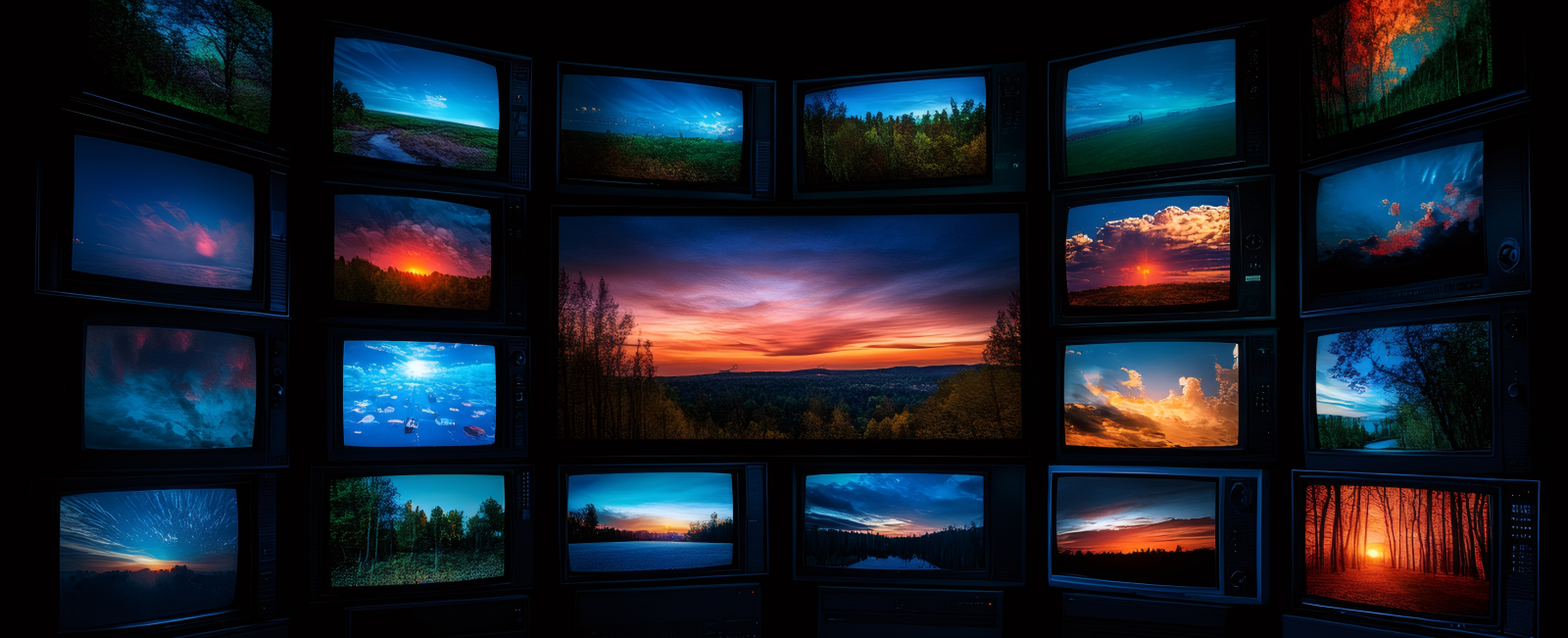What Is Video Art?
Exploring Art Through the Screen
Video art is a form of artistic expression that uses video technology as the main medium. Unlike traditional art forms like painting or sculpture, it’s designed to be experienced through a screen. This can include short experimental films, looping video pieces, or even large-scale installations that fill entire rooms.
Why Is Video Considered an Art Form?
A New Way to Tell Stories
One of the reasons video is recognized as an art form is its ability to combine visuals, sound, and time. Artists can use these elements to shape how viewers experience a story, mood, or concept. This makes the work more dynamic, layered, and immersive.
Beyond Static Images
Video art moves. It breathes. It often reacts to the viewer or changes over time. These features allow artists to push boundaries, offering something that a canvas or sculpture simply can’t do.
The Role of Video Art in Society
Engaging With Real-World Issues
Video art gives artists a unique platform to comment on social and political topics. Whether addressing climate change, race, identity, or media culture, video allows creators to speak in a modern, relatable language.
A Tool for Awareness
By reflecting the world as it is—or how it could be—video art challenges viewers to think. It can shock, soothe, provoke, or inspire. In doing so, it connects deeply with real human experiences.
The Power of Video Art
More Than Just Entertainment
While it may look like film or digital media, video art serves a different purpose. It’s not always about narrative or resolution—it’s about emotion, thought, and expression. The medium itself becomes part of the message.
Illuminating the Mind
Video art invites viewers to look, listen, and reflect. It brings together sound, image, movement, and meaning in one space. When done well, it stays with you—long after the screen goes dark.
Video Art
Breaking Down Creative Boundaries
Video art doesn’t stay in one lane. It blends cinema, music, performance, and visual storytelling into a single piece. This mix of disciplines allows artists to craft complex, layered works that challenge how we think about both art and media.
Pushing the Edge of Innovation
Many of the most experimental pieces in modern art come from video-based projects. These works often step outside the rules of traditional film and fine art. Some even push into areas considered taboo—yes, including certain types of erotic content—prompting questions about what art really is.
Why Video Art Matters
Freedom of Expression and Storytelling
Video art gives creators the tools to tell stories in bold, flexible ways. It adds movement, sound, and timing to the visual experience, creating something that’s more alive and immediate than a still image. Artists use it to express thoughts, emotions, and viewpoints that can’t always be captured through paint or sculpture.
Tackling Real-World Issues
Social, political, and personal topics are often at the heart of video art. Artists use the medium to comment on current events, explore identity, or confront cultural norms. Its ability to react quickly to what’s happening in the world makes it especially powerful.
Looking Ahead: The Future of Video Art
Growth Through Technology
As video tools become more accessible, video art keeps expanding. From high-definition cameras to interactive digital installations, technology gives artists more freedom to experiment. The next wave of video art could include virtual reality, AI-generated visuals, or entirely new formats we haven’t seen yet.
A Medium That Keeps Evolving
Video art has already come a long way—but it’s not done growing. With every leap in tech, artists are finding new ways to speak through the screen. What’s certain is that video art will keep surprising us, challenging us, and making us look twice.

10 Ultimate Examples of Video Art
1. “The Clock” (2010) by Christian Marclay
This 24-hour video montage is made up of thousands of film and TV clips that all reference the exact time shown on screen. The work is synchronized with real time, so if you watch it at 3:15 PM, the clip you see will also be set at 3:15 PM. It’s a landmark in video art for its scale, editing precision, and its unique way of making viewers feel the passing of time.
2. “Electronic Superhighway: Continental U.S., Alaska, Hawaii” (1995) by Nam June Paik
Paik’s installation is a huge map of the United States outlined in neon lights, with each state filled with a stack of TVs playing unique, region-based video clips. It reflects how technology and media have shaped American culture and identity. The work is both a visual spectacle and a bold statement about the rise of electronic communication.
3. “Fistful of Silence” (2007) by Hiraki Sawa
This surreal, black-and-white video shows a tiny man walking through a house filled with strange, shifting objects. The dreamlike sequence plays with scale and perception, making everyday spaces feel magical and otherworldly. Sawa’s delicate editing and minimalism draw viewers into a quiet, poetic narrative.
4. “Televisions” (1967–1970) by Wolf Vostell
Vostell’s piece involves old television sets stacked and sealed in concrete, turning devices of entertainment into heavy, lifeless blocks. The work critiques society’s passive consumption of media and the overwhelming nature of mass communication. It remains one of the earliest and most radical uses of video technology in contemporary art.
5. “The Visitors” (2012) by Ragnar Kjartansson
In this emotionally charged video, nine musicians play the same melancholic tune in separate rooms of a decaying mansion. Each performance is filmed in one continuous shot and projected simultaneously, creating a haunting, immersive experience. The piece explores themes of isolation, collaboration, and the power of music.
6. “Diamond Stingily” (2016) by Diamond Stingily
This installation places viewers in a tight, fur-lined room with a TV screen looping personal and found video clips. The contrast between soft textures and raw footage adds to the piece’s emotional intensity. It addresses themes of vulnerability, race, memory, and how identity is shaped by both the public and private self.
7. “Five More Minutes” (2013) by Pipilotti Rist
Rist’s work transforms a gallery into a sensory dreamscape, with flowing video projections of forests, water, and abstract forms. Viewers are encouraged to lie down, relax, and become part of the space. The piece is both soothing and immersive, pushing video art into the realm of emotional therapy.
8. “The Messenger” (1999) by Bill Viola
A man stands still before being blasted with water, followed by a mesmerizing slow-motion descent through a submerged world. Viola’s piece blends spiritual themes with physical vulnerability, often interpreted as a visual meditation on rebirth or transformation. It’s known for its rich symbolism and technical precision.
9. “Terra Incognita” (2002) by Stan Douglas
Set in a futuristic city, this video installation mixes CGI with real-life architecture to imagine a sleek, neon-lit future. It explores the intersection of technology, space, and social dynamics in tomorrow’s urban life. Douglas’s work comments on the evolution of cities and how digital design shapes human experience.
10. “O Superman” (1981) by Laurie Anderson
This piece combines Anderson’s electronic spoken-word track with abstract video visuals, offering an eerie commentary on power, communication, and modern life. Its repetitive, minimalist structure gives it a hypnotic quality that lingers in the mind. Often cited as one of the earliest and most influential examples of video performance art.
Different Forms of Video Art
Single-Channel Video
Single-channel video is the most common and straightforward form of video art. It involves playing a single video on a monitor or through projection on a screen. This format is often used for short films, experimental pieces, or narrative-driven works that focus the viewer’s attention on one stream of content.
Video Installation
Video installation takes video art into a physical space, often using multiple screens or projectors arranged throughout a room. The goal is to create an immersive environment that surrounds the viewer. These installations can evoke emotion through scale, sound, and spatial arrangement.
Performance Video
Performance video blends live action with pre-recorded footage, creating a hybrid experience that exists between video and theater. The video component might be projected during the performance or documented as part of the final work. This form often pushes the boundaries of time, space, and audience engagement.
Interactive Video
Interactive video introduces audience participation into the artwork. Viewers may control the video using motion sensors, touch screens, or other responsive technologies. This type of video art often challenges passive viewing and turns the audience into an active part of the piece.
Animated Video
Animated video art uses hand-drawn, stop-motion, or computer-generated imagery to bring visuals to life. These works often explore surreal or abstract concepts that might not be possible through live-action video. Animation allows artists to bend reality and explore visual storytelling in entirely new ways.
Documentary Video
Documentary video in the context of video art often steps away from traditional journalism and focuses on creative storytelling. Artists use real footage, interviews, and archival material to explore cultural, political, or social issues. The result can be personal, poetic, or provocatively political.
Video Sculpture
Video sculpture combines video screens with physical structures to create a three-dimensional experience. The moving images are often embedded in or projected onto sculptural forms. This combination creates a layered work that engages viewers both visually and physically.
Web-Based Video
Web-based video art is made specifically for the internet. Artists take advantage of the web’s interactive features, using hyperlinks, real-time data, and multimedia layering. These works are designed to be experienced through browsers, making them more accessible and often more experimental.
Most Expensive Video Art Ever Sold
Maurizio Cattelan’s “Comedian” and Its Unusual Sale
The highest recorded price for a video artwork at auction is tied to Comedian by Italian artist Maurizio Cattelan, which sold for $6.6 million at Christie’s in 2020. However, this piece blurs the lines between performance, conceptual art, and video. The original work—famously a banana duct-taped to a wall—was sold at Art Basel Miami Beach in 2019 for $120,000, sparking media frenzy and debate.
From Performance to Video Documentation
What was eventually sold at auction wasn’t the banana itself, but a video documenting the performance and its chaotic reception. This move transformed the fleeting, physical act into a lasting digital artwork. While not traditional in style or structure, the video became a collectible piece due to its viral fame and conceptual weight.
Christian Marclay’s “The Clock” as a Benchmark
When it comes to traditional video art, The Clock by Christian Marclay is one of the most celebrated and influential works ever made. This 24-hour-long montage syncs thousands of film and TV clips with real time, turning the viewing experience into a functioning timepiece. It’s praised for both its technical brilliance and cultural resonance.
A Valuable Yet Undisclosed Sale
The Clock was sold to the Centre Pompidou in Paris in 2012, although the final price was never publicly disclosed. Despite its acclaim, it is not officially the most expensive video artwork sold—but it remains one of the most respected and sought-after examples of video art in the world.


You must be logged in to post a comment.